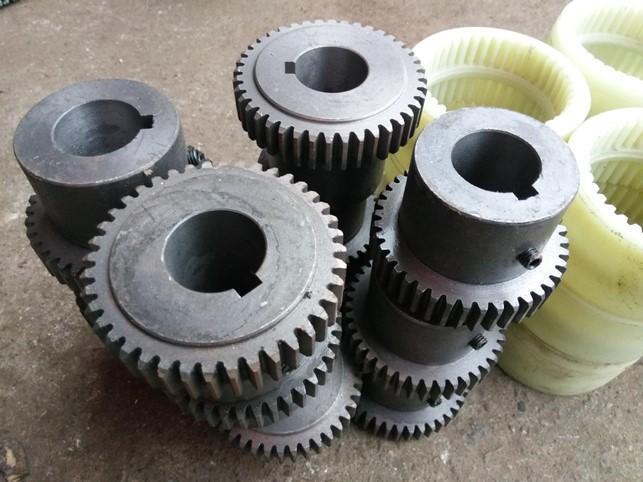
Gearing coupling
Gearing coupling is composed of internal gear ring with the same number of teeth and flange half coupling with external teeth. The external teeth are divided into two types: straight teeth and drum teeth. The so-called drum teeth means that the external teeth are made into a spherical surface. The center of the spherical surface is on the gear axis. The tooth side clearance is larger than that of ordinary gears. Allows a larger angular displacement (compared to the straight tooth coupling), which can improve the contact conditions of the teeth, increase the torque transmission capacity, and extend the service life. When the gear coupling is working, the two shafts produce relative displacement, and the tooth surfaces of the internal and external teeth periodically slide relative to each other in the axial direction, which will inevitably cause tooth surface wear and power loss. Therefore, the gear coupling needs to be well lubricated and sealed. Work under state.
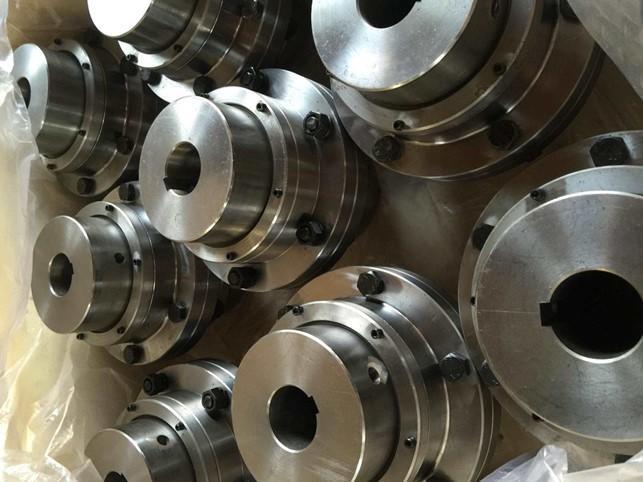
Gearing coupling is a kind of removable rigid coupling. It uses internal and external tooth meshing to realize the transmission of torque and rotational movement between the two halves of the coupling. It is suitable for connecting two concentric shafts and has the performance of compensating the relative displacement of the two shafts. Its structure is shown in Figure 1.Gearing coupling is composed of main parts such as inner gear ring, gear shaft sleeve and end cover. Generally, small-sized gear coupling end cover and inner gear ring can be integrated.
Gearing couplings are widely used in various machinery industries such as metallurgy, mining, lifting and transportation, petroleum and shipbuilding due to their compact structure, large carrying capacity, wide operating speed range, and reliable operation.
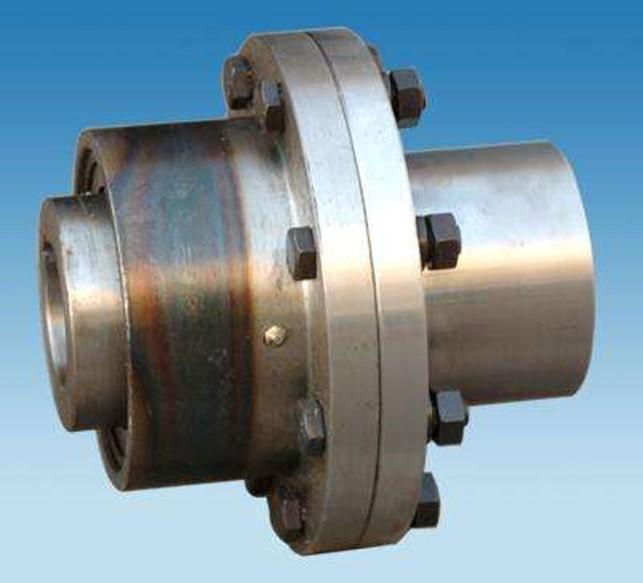
Features:
Gearing couplings have small radial dimensions, large load-bearing capacity, and are long used for shaft transmission under low-speed and heavy-duty conditions. High-precision and dynamically balanced gear couplings can be used for high-speed transmission, such as the shaft of a gas turbine Transmission line. Because the angular compensation of drum gear couplings is greater than that of straight gear couplings, drum gear couplings are widely used at home and abroad. Straight gear couplings are obsolete products. Optional.
The more common gear couplings in the market include general structure gear couplings, drum gear couplings, nylon gear couplings and so on. Among them, there are many types of drum gear couplings and they are widely used.
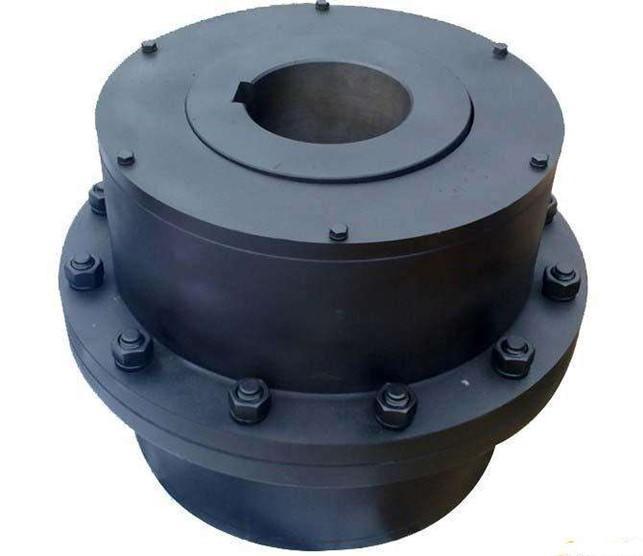
Classification and characteristics:
Gearing couplings can be divided into three types according to the different axial tooth profiles of the outer gear sleeves, namely straight gear couplings, drum gear couplings and special drum gear couplings. Regardless of the type, the ring gear and the involute spur internal gear are the same except for the difference in the selection of the head clearance coefficient of the gear teeth.
The axial gear blank of the external gear bushing of the spur gear coupling can be machined into two kinds of linear and circular arc shapes, and the index circle and the tooth root circle are both straight lines. The meshing form of this coupling is gradually The meshing of the internal and external teeth of the open cylindrical gear is exactly the same. By increasing the side clearance of the internal and external teeth, the relative displacement between the two shafts is compensated, but the compensation amount is limited.
The tooth tip of the outer gear sleeve of the drum gear coupling is processed into an arc, that is, the tooth blank is processed into a spherical surface. In the section of the tooth center plane and tangent to the pitch cylinder surface, the teeth form a drum shape, the so-called drum form Coupling.
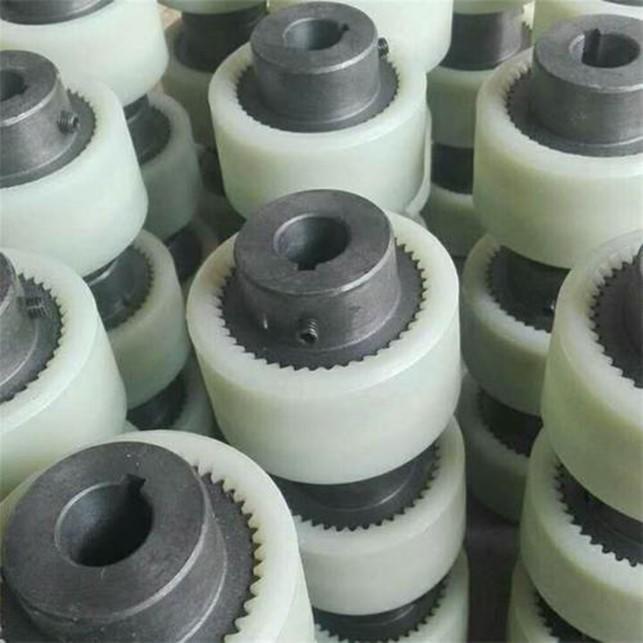
Gearing coupling characteristics are:
1. High load-carrying capacity, calculated by bending strength, under the same conditions, the torque transmitted by the spur gear coupling is increased by 15-30%;
2. The structure is reasonable and the performance is reliable. Because the tooth side is drum-shaped, the contact of the axis is improved under a certain angle condition, thereby reducing the contact stress and eliminating the load concentration at the tooth end of the spur coupling. Eliminate edge extrusion and improve work performance.
3. Good compensation performance. The tooth profile of the outer gear sleeve is drum-shaped, which increases the allowable relative deviation of the two shafts connected. The allowable inclination angle can reach up to 6 degrees, and 1.5°~2.5° is generally recommended.
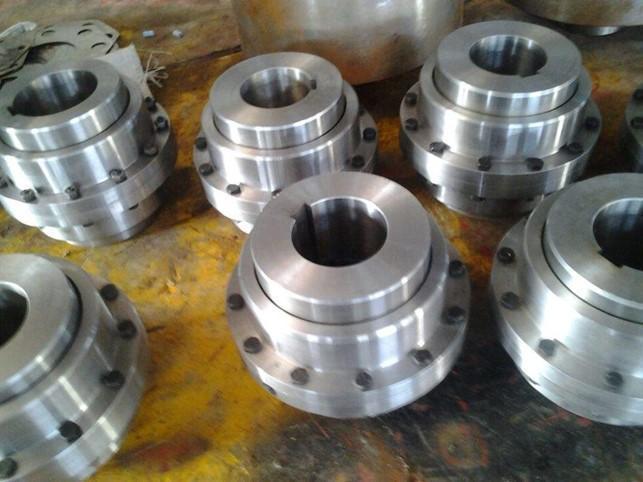
The causes of gear coupling failure mainly include the following two aspects: 1. Insufficient oil or lack of oil in the coupling of the lifting accessories. Or improper use of grease may result in calcification of the grease, resulting in inability to lubricate between the tooth surfaces, or poor lubrication, resulting in serious tooth surface wear. Treatment method: As long as the new grease is replaced, qualified grease oil is injected on schedule to prevent oil leakage, and the amount of oil can be avoided.
malfunction:
1. The tooth surface of the gear coupling is severely damaged.
2. The axial displacement of the gear ring of the gear coupling is large, and it can't even mesh.
3. The gear coupling has broken teeth.
4. The bolt on the gear coupling is broken
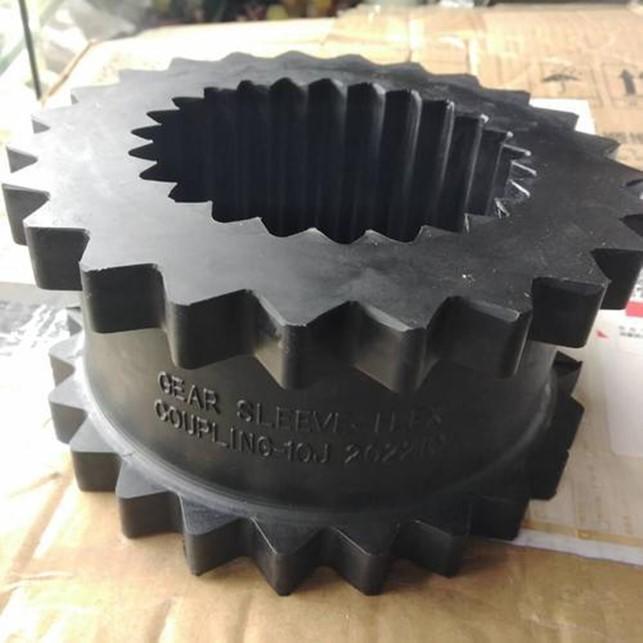
Gearing coupling
Lubrication of gearing coupling:
Gear couplings are common mechanical parts used by gear reducers to transmit torque. It is composed of two parts, the driving shaft and the driven shaft. The general power machine is mostly connected with the working machine by means of it. When the gear coupling is loaded, the surface of the gear teeth generates frictional heat due to the slight reciprocating motion, especially under high-speed conditions. If the gear coupling is not properly lubricated, the tooth surface will wear out quickly, or even glue, so the lubrication conditions must not be ignored when designing.
There are generally three ways to lubricate gear couplings:
1. Oil storage lubrication. The lubricating oil is injected from the nozzle, and a certain lubricating oil layer is maintained on the outer circle of the gear due to the centrifugal force of the lubricating oil during rotation. This lubrication method will leave the magazine in the ring gear, and the oil flow will have a poor heat dissipation effect, so it is only suitable for occasions with low power and low speed. There is also a non-flowing oil storage lubrication method belonging to this type, which is to pour grease into the inside and seal it, and wash it regularly.
2. Self-flow lubrication. The lubricating oil is injected from the nozzle, flows through the gear backlash, and flows out from the small hole of the sleeve. This lubrication method mainly plays a cooling role, and it is difficult to form an oil film. The tooth surface wears faster than the following strong lubrication.
3. Powerful lubrication. The lubricating oil is sprayed into the small holes at the bottom of the gear teeth, and the oil enters the meshing surface under the action of centrifugal force to play the role of lubrication and cooling. The oil flows out from both sides of the tooth after passing through the meshing surface. With this type of lubrication, the oil circulates continuously, and the magazine flows out, and the injected lubricating oil causes a certain pressure to enter the gear tooth meshing surface under the action of centrifugal force, so it has a better lubrication and cooling effect, suitable for high-speed and heavy-duty occasion.
The above three gear coupling lubrication methods have their own advantages and can be selected according to different gear reducers and different load characteristics.
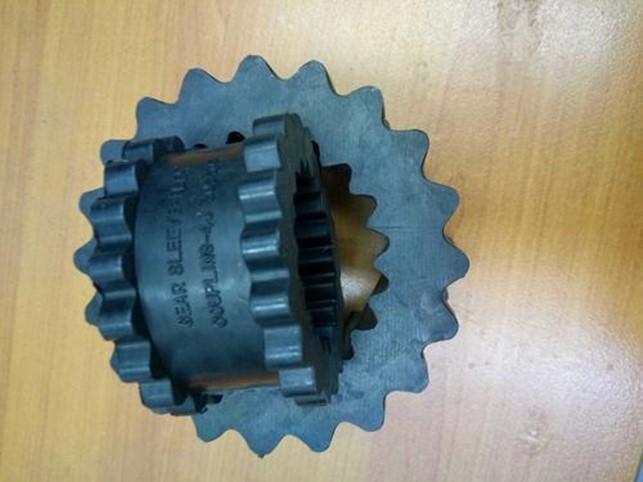
Gearing coupling
cause:
A removable rigid coupling consisting of an outer sleeve with internal teeth and flanges and an inner sleeve with external teeth. The hub of the inner sleeve is respectively connected with the driving shaft and the driven shaft; the two outer sleeves are fixed together by bolts outside the flange. When working, the internal teeth and external teeth make meshing motion. The inner and outer teeth mostly adopt involute tooth profile with a pressure angle of 20°, and the tooth side clearance is larger than that of ordinary gear pairs. The external tooth tip circle generatrix is made into a spherical surface, and the center of the spherical surface is on the gear axis, so it has the characteristics of compensating the relative radial, axial and angular displacement of the two shaft axes. In order to improve the contact condition of the teeth and increase the bearing capacity of the coupling, the allowable relative angular displacement of the two shafts can be drum-shaped teeth, that is, the pitch circle and root circle in the width direction of the external tooth are changed from straight to arc to make The cross-section of the teeth is drum-shaped to reduce or avoid the interference of the meshing surface and poor contact due to the axis deflection. The arc of the drum tooth can also be composed of arcs with different radii of curvature to obtain a tooth profile suitable for axis deflection of different sizes. The gear coupling has more teeth to work at the same time, small size, large carrying capacity, and reliable work at high speed. The thin-shell cylindrical intermediate gear sleeve gear coupling can adapt to a speed of up to 20,000 rpm. Drum gear couplings are widely used in high-speed and heavy-duty machinery. They have the characteristics of no axial movement, balanced transmission, low impact and vibration, and low noise. However, the processing technology is more complicated and the cost is higher. In order to improve the performance and life of the gear coupling, it must have good lubrication under working conditions. If necessary, continuous oil injection and forced lubrication should be adopted.
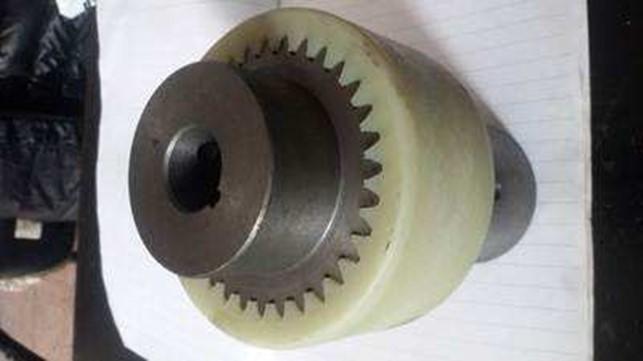
Gearing coupling
The horizontality and coaxiality errors of the two shafts are too large, which exceeds the range that the coupling can compensate, which makes the shaft tooth and the internal tooth mesh incorrectly, causing local contact and additional torque. And this additional moment can be decomposed into axial force. Acting on the inner gear ring, the magnitude of this force depends on the size of the deviation, and is proportional to the deviation. The greater the deviation, the greater the force, and the inner gear ring of the lifting fitting coupling produces axial displacement. If the displacement is too large, it will be uncontrollable, resulting in serious gear wear and even broken teeth. The internal and external teeth cannot be meshed until they cannot be transmitted. It is difficult to deal with this kind of fault, and it needs to stop production. That is to re-align, or re-align the side of the reducer, or re-align the side of the reel. First find out the part with larger offset error, then first measure the side offset of the coupling, that is, measure the level and coaxiality of the main shaft and the level and coaxiality of the reducer main shaft, and then press the quality again. Standard copy leveling can eliminate the fault. If the author has found such failures on site, the hoist is JK-25/. 5Single-rope winding hoist, the concentricity deviation of the coupling was measured at that time 2n, the side of the reducer was low, which caused the coupling of the lifting accessories to fail to work, and the axial displacement of the inner gear ring exceeded the tooth width. Realign the reducer according to the quality standard. After adjustment, it runs normally and the fault is eliminated. In addition, the horizontality and concentricity of the two shafts have a large error, which causes the coupling to rotate in a different way. The reasons for the wear of the coupling gears of the lifting accessories are basically similar. In addition to the normal force, the connecting bolts are also subjected to additional bending moments, causing them to break. This is the main reason. This kind of reason mostly occurs when the level difference between the left and right sides of the reducer main shaft is large. Furthermore, bolts with small diameters, insufficient strength, or poor bolt materials can also cause bolts to break.

The best service from our transmission drive expert to your inbox directly.
Our Service
Get in Touch
Yantai Bonway Manufacturer Co.ltd
ANo.160 Changjiang Road, Yantai, Shandong, China(264006)
T+86 535 6330966
W+86 185 63806647